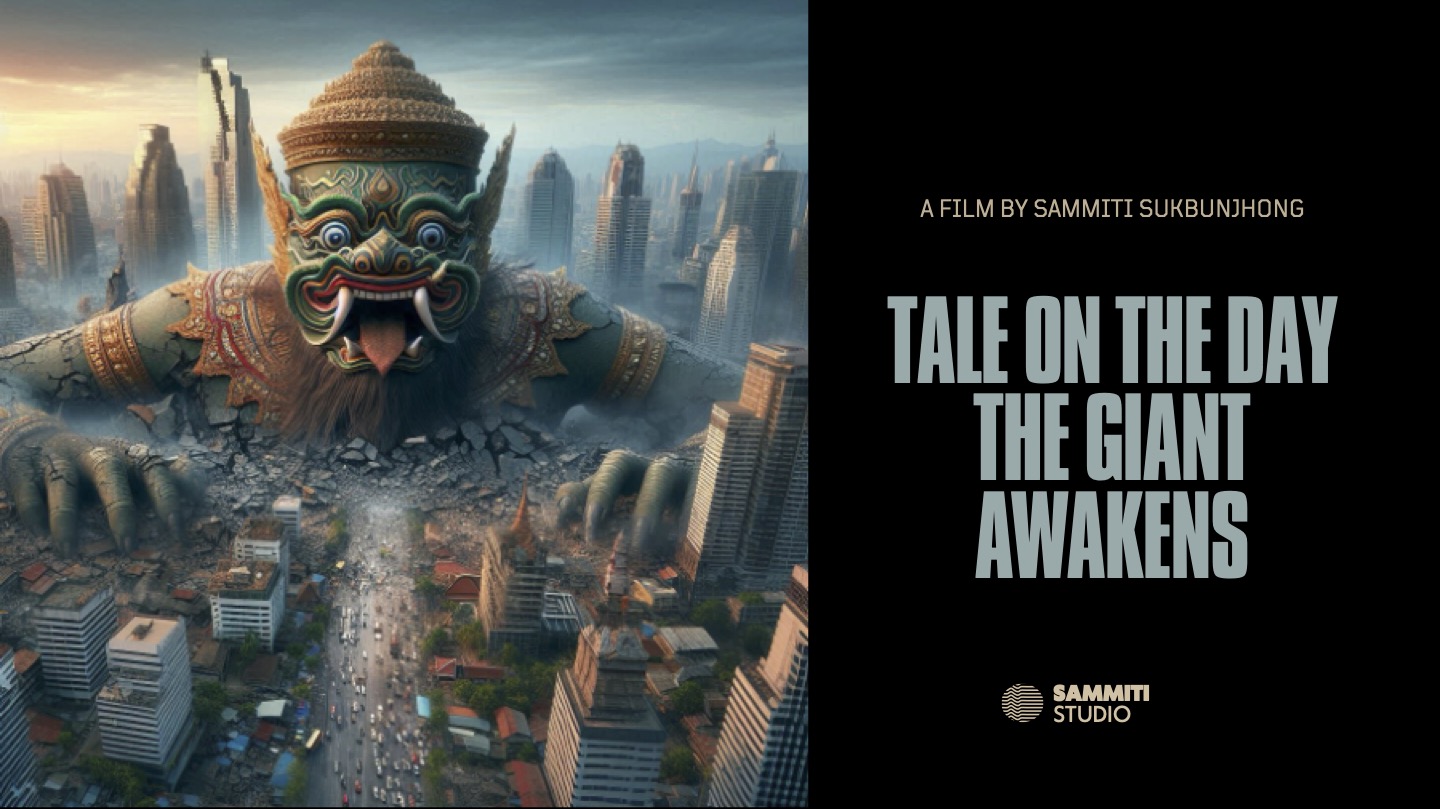
College of Design, Rangsit University
Asst.Prof.Dr. Sammiti Sukbunjhong

Abstract :
Natural disasters have occurred continuously over the past decade, warning people to “wake up” and realize that humans have contributed to various disasters caused by human actions that have taken advantage of nature, which has affected the rock layers beneath the earth’s crust for a long time. On March 28, 2025, a severe earthquake occurred in the heart of Bangkok, which has had an unforgettable impact on the thoughts and beliefs of the people who experienced it. The experimental film “Tale on the Day the Giant Awakens” is therefore a work that aims to collect data on the severe earthquake in Bangkok and to convey and creatively compose it in the form of film art. It also aims to create an experimental film with content related to those who experienced the severe earthquake in Bangkok, as well as present the attitudes, beliefs, feelings, and direct experiences of those who experienced it, and to present the idea that “When nature has awakened to warn humans… will humans who are still asleep be able to wake up?”
Objectives :
- To collect data from people who experienced the severe earthquake in Bangkok and to convey and compose it in a creative form of film art.
- To create an experimental film with content related to people who experienced the severe earthquake in Bangkok, including presenting the attitudes, beliefs, feelings and direct experiences of the people who experienced it.
Conceptual Framework :
“Tale on the Day the Giant Awakens” has a main concept of creating an experimental film that uses the participatory documentary filmmaking process. The conceptual framework uses a research process to collect data from a sample group of people who experienced the severe earthquake in Bangkok. It is used through creative experimentation, storytelling, and conveyed through images to communicate the meaning of awareness of natural disasters caused by human actions.
Process / Methodology :
The experimental film “Tale on the Day the Giant Awakens” uses the participatory documentary filmmaking process, which is divided into 4 steps:
1. Pre-production process
During this process, the creator started by collecting information related to the victims of the severe earthquake in Bangkok, including collecting the attitudes, beliefs, feelings and direct experiences of the victims, to create a draft of the film. The creator wrote the script and directed the film himself, and planned with the production and shooting team to proceed with the production planning.
2. Film production process
The creator worked on the film production, following the plan set with the film production team.
3. Post-production process
When the filming process was complete, the creator worked with the editing team, which is an important step in transforming the idea into a work of art.
4. Film distribution process
When the three processes above were complete, the creator planned the distribution, both through the 13th Symposium exhibition and online channels.
Techniques and Materials :
The experimental film “Tale on the Day the Giant Awakens” uses documentary filmmaking techniques that emphasize the creation of highly personal and subjective narratives, with an important tool in interview design that can extract interesting and engaging information from key informants who appear in the film, combined with visual storytelling that provides symbols to the audience.
Result / Conclusion :
The results of the study on the creation of the experimental film “Tale on the Day the Giant Awakens” found that the creation of a participatory documentary film can use the qualitative research process in conjunction with the creation of the film, and the important research tool is the in-depth interview with cleverly designed questions, which affects the creation process. A quality documentary film script depends on the data collection and fieldwork processes, as well as building good relationships with key informants. The results of the study also found that the creation of a documentary film can use artificial intelligence to help save time and make the creation of visual works more interesting.
References :
Capcut. (2024) How to Make a Documentary: Essential Steps for Beginners, https://www.capcut.com/th-th/resource/how-to-make-a-documentary-film
Jourdan Aldredge. (2022) The 6 Types of Documentary Films. Retrieved from https://www.premiumbeat.com/blog/6-types-of-documentary-film.